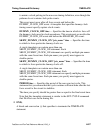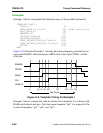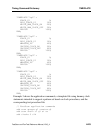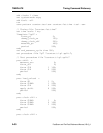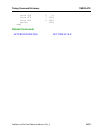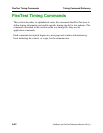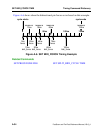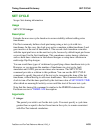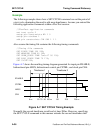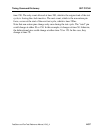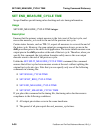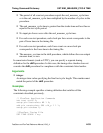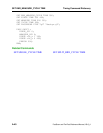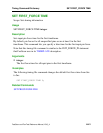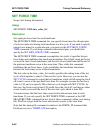
Timing Command Dictionary SET CYCLE
FastScan and FlexTest Reference Manual, V8.6_4
A-35
SET CYCLE
Scope: Sets timing information
Usage
SET CYCLE integer
Description
Extends the non-scan cycle duration to ensure stability without adding extra
timeframes.
FlexTest commonly defines clock pin timing using a test cycle with two
timeframes. In this case, the clock goes active sometime within timeframe 2 and
goes inactive at the end of timeframe 2. The second clock transition coincides
with the input pin forces in the next test cycle, because by default input pin forces
occur at time 0 in the first timeframe. This sometimes creates timing violations,
such as hold time violations in latch-based designs or setup time violations in
multi-edge flip-flop designs.
You can avoid these types of violations by specifying a three-timeframe test cycle.
However, as you increase the number of timeframes in a test cycle, fault
simulation and ATPG process run-times also increase. The SET CYCLE
command provides a solution to this problem. You can use the SET CYCLE
command to specify the period of the test cycle, increasing the time of the last
timeframe, without having to add more timeframes. This command allows the
clock to turn off at the time specified by the last time value of SET FORCE TIME
after which no meaningful activity occurs until the start of the new test cycle.
Note that this timing file command is similar to the PERIOD statement that
FastScan uses in its TIMEPLATE description.
Arguments
• integer
The period you wish to set for the test cycle. You must specify a cycle time
greater than or equal to the last force time in the cycle, to remain consistent
with FlexTest internal simulation.



